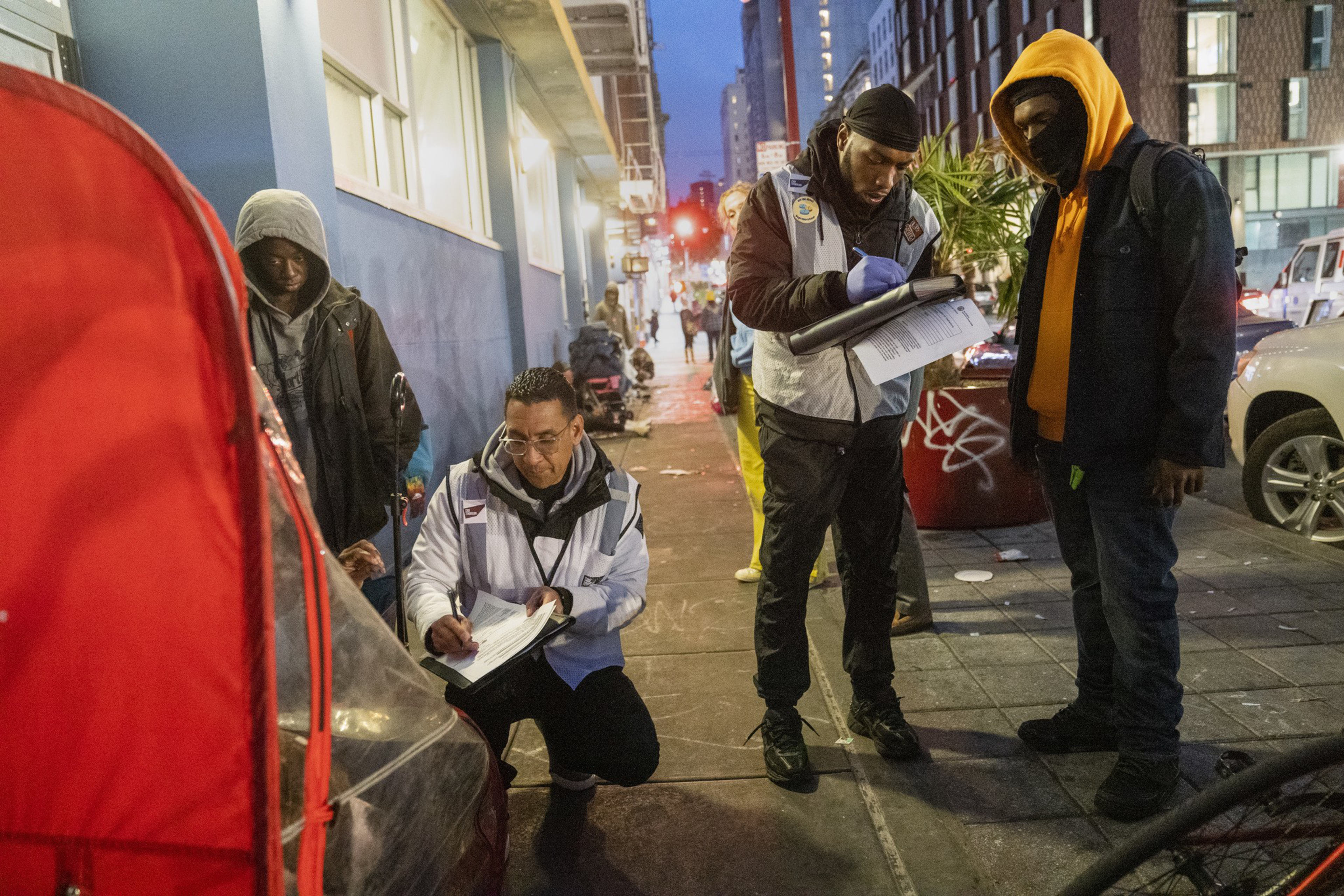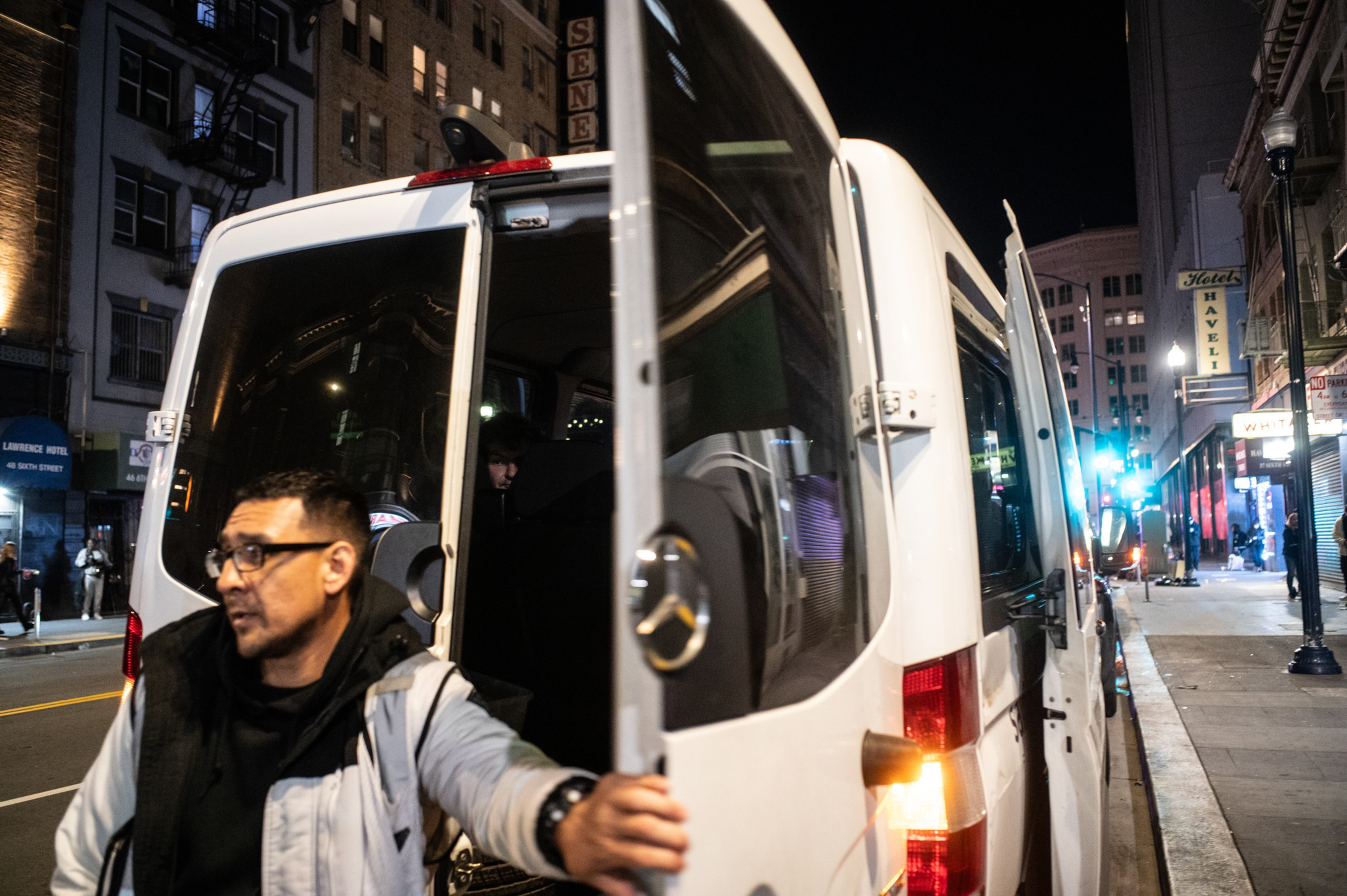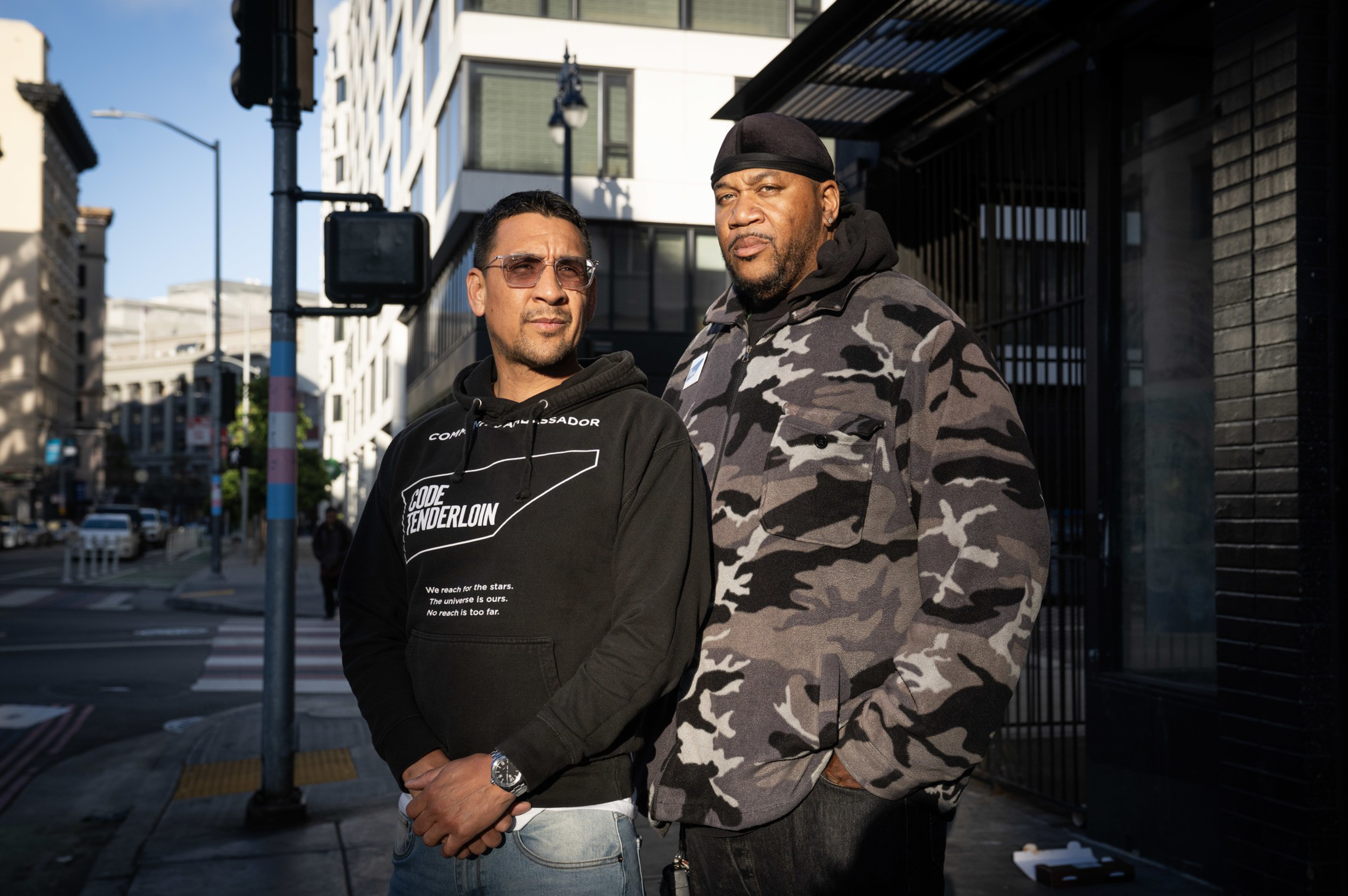Douglas Liu can sell anything. He learned that while on the run from the U.S. government, peddling timeshares to tourists in Mexico.
For around 10 years, Liu lived by the beach in Puerto Vallarta, hiding from a federal armed robbery case, raking in cash and refining his pitch.
“You wanna have a good time?” he would ask the tourists. “Or do you want to have a boring vacation like everyone else?”
In 2015, he was extradited to the U.S. and spent more than eight years behind bars. Never one to waste time, he used those years sharpening his sales acumen, studying books and YouTube videos. And when he got out in 2023, he put his skills toward a new cause: convincing drug users to enter treatment in San Francisco’s Tenderloin.
Now, most nights, Liu and a team of seven Night Navigators with the nonprofit Code Tenderloin stand alone on the front lines of the city’s drug crisis. Armed with the overdose reversal drug Narcan, rehab pamphlets, and snacks, they trudge through violent and unsettling scenes of drug deals and brawls at a time of night when few cops are on patrol.

With an annual budget of $870,833, the team connects roughly 250 people to drug treatment every month — a staggering success, city officials say. They have coordinated thousands of virtual doctor appointments from the sidewalk since 2023. In recent months, the work has become even more essential as the city has increased daytime drug enforcement, forcing many users to emerge only at night.
The job presents many obvious dangers, not to mention heartbreak. But for Liu, there are similarities to his timeshare days, as he’s reciting the same seven-step pitch he once used to hustle tourists.
“Are you ready to turn your life around?” he asked while approaching Mike, a homeless man sitting near the corner of Sixth and Market streets. “Don’t you remember how nice your life was before all this?”
‘The secret sauce’
Dozens of drug users crowded the corner of Sixth and Stevenson streets as Liu and his partner, Fontaine Sherman, started their shift at around midnight on a Tuesday in early July. Fentanyl smoke floated above the crowd, and screams of agony echoed through the corridor as the two men bounced from client to client, with drug dealers watching their every move.
“We got Narcan, Rice Krispie Treats, Subutex prescriptions,” Liu bellowed to the crowd. “We want to support you in getting your life back.”
In the shadow of a doorway, two men fought over one of the sugary treats. Down the block, a man lay half-naked in the gutter. Only a few days earlier, Sherman had stopped him from jumping into oncoming traffic. He offered the man a soda to pull up his pants and move to the sidewalk. The man obliged.
Within an hour, the duo spoke with more than a dozen people, usually spending a few minutes with each, encouraging them to seek treatment.
“You got your whole life ahead of you,” Liu pleaded with a 20-year-old named Mikey who said he was addicted to fentanyl. “You’ve got to do something before you’re like the rest of these people. Suddenly, it’s 10, 20 years later.”

At around 1:30 a.m., the duo found their first successful treatment admission of the night. A man named Rudy Batka, slumped on the Stevenson sidewalk, told Liu he wanted to return home to Florida and reconnect with family — but first he had to get sober. Liu hopped on the phone and scored a bed for Batka at a nearby detox. It was the first time Batka had entered treatment in years, he said.
“The secret sauce is you just got to listen to them,” Sherman said. “They’ll tell you what they need.”
The Standard spent three nights with the Code Tenderloin team, observing their late-night work. In early May, one formerly homeless woman named Candra Jordan joined the group in trying to convince her friends to enter treatment. Jordan said she’s spent more than a decade addicted to drugs in San Francisco, losing custody of her children, her housing, and nearly all hope until she met Sherman.
When The Standard met Jordan on May 6, she had been sober for a month and was reconnecting with her family.
“I was so scared. Once you die out here, you’re dead for 45 minutes, and then they move on to the next body,” Jordan said to the team. “Nobody cares, and why should they? I didn’t care. But y'all did.”
‘We need help’
Despite the group’s successes, the initiative has its limitations. Without more staff, Code Tenderloin members say, they’re unable to follow every client through treatment.
A few days after Liu and Sherman shuttled Batka to detox, The Standard found him walking on Sixth and Mission streets, cleaning his fingernails with a knife. The medication he’d been given at the rehab facility made him sick, he said. Disillusioned by what it would take to achieve his goals, he returned to the streets.

“I just couldn’t do it. I’m sorry,” Batka said. “I don’t know where to go now.”
Liu and Sherman said it's not uncommon to repeatedly run into former clients after admitting them to detox. Recovering from addiction takes time, they explained — sometimes years. And most people don’t succeed on the first try.
“Some people think their job is done once you get someone in rehab,” Liu said. “But that's actually when your job is just getting started.”
One night in early May, the team was successful in transporting several people to a sobering center. They were accompanied that night by Daniel Tsai, director of the Department of Public Health. He worried the interventions wouldn't be enough on their own.
“The issue is that tomorrow morning, those people will walk out and start using again,” Tsai said at the end of the night. “We need to figure out a better way to be sticky with people.”

Liu said his team is improving its coordination with rehabs across the city, with the goal of staying in touch with clients and thereby improving their outcomes. But without more funding and support, there is only so much they can do.
Every night, they are outnumbered exponentially by drug users and dealers as fentanyl takes the lives of roughly two San Franciscans every day.
“We need funding. We need help from the community,” Liu said. “We need people to take action and get involved and stop pointing fingers.”

